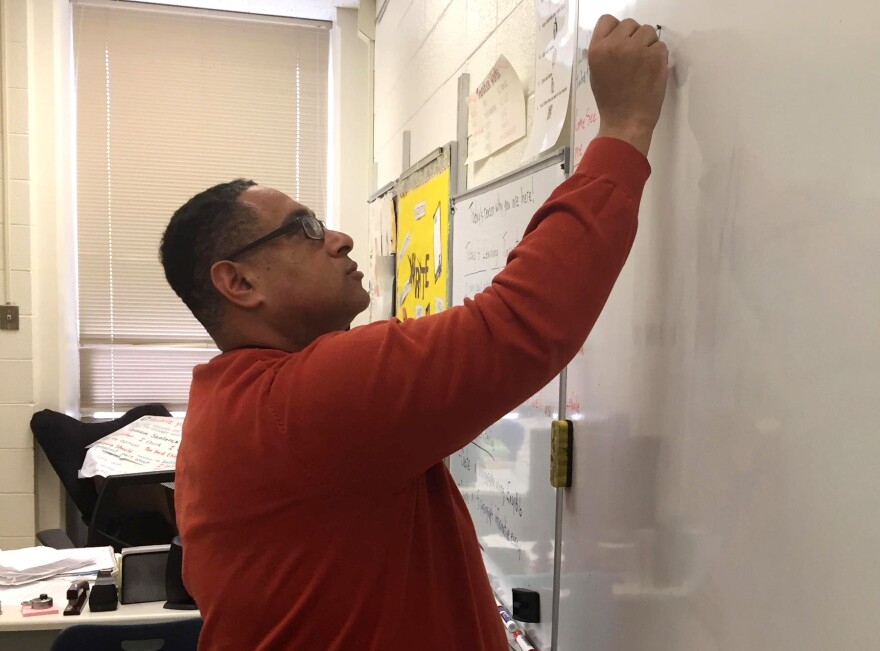Imagine someone hands you a bonus -- a few hundred extra dollars. How would you spend the money? That’s a question facing Wisconsin school districts.
Gov. Scott Walker has famously cut spending for public schools for most of his tenure. But earlier this month, during his biennial budget address, Walker proposed increasing state aid to schools.
“To help improve student success, we’re investing more money into education than ever before in the history of Wisconsin,” Walker announced.
If lawmakers pass the governor’s budget as written, districts could receive as much as $200 additional per student, in each of the next two years.
Administrators in the Brown Deer School District can barely contain their excitement.
“It’s awesome!” says Monica Kelsey-Brown, Director of Teaching & Learning. “Wonderful!”
“We are ecstatic about it, because we just need a little bit more do to what we want to do!” adds Superintendent Deb Kerr.
What would administrators want to do with potentially $300,000 more in their budget?
Dr. Kerr has been visiting each district building to collect ideas.
“We’ve put all of the things we feel we need on a list, and we call it the ‘wish list’,” Kerr explains. “Two weeks ago, when we had our meeting, there was over $1.2 million worth of wishes!”
The higher-ups – principals and administrators – tend to request big-ticket items, things that can be used throughout their buildings. One example: more interventionists, the staff members who roam between classrooms to work with students struggling academically.
As for teachers, they look around their classrooms to see what’s needed.
The walls in Dave Lucre’s classroom at Brown Deer Elementary are plastered with “cheesy” inspirational posters.

Does Lucre want more inspirational items? No. He says more technology would be nice.
“I’d like to have like a SmartBoard in here,” Lucre says, “but because of our budget constraints, the focus is to give the math teachers more of the priority to get a SmartBoard. So I’d like to do that.”
In addition to technology, Brown Deer High social studies teacher Erica Probst says she’d like to fund more opportunities for teachers to collaborate.
“I think the opportunity to co-teach, to help us implement different technology, and use our time differently with students would be huge,” Probst says.
Aside from formal requests to district leaders, Brown Deer teachers do have another avenue to fund special projects. The Education Foundation of Brown Deer supports various district efforts through different grants.
"I think there's this new mentality that you're going to advocate for what you might want to do in your class"
Probst has won one of those grants, a process she says felt pretty painless. But, she adds, teachers often aren’t equipped with the necessary knowledge or skills to jockey for more resources.
“I think there’s this new mentality that you’re going to advocate for what you might want to do in your class, and it’s a new way of thinking as a teacher,” she says. “I don’t think teachers are very good at asking for money, thinking of yourself like a business person and advocating for what you want or what you need. Sometimes you just go along with what you have.”
In crafting their own wish list, Brown Deer students tend to be driven by things they touch...
“We could use the money for textbooks,” says a sophomore student named Joe.
“I’d spend it on desks,” says his classmate, Justin Greenlee. “Some of our desks is [sic] uncomfortable. The chair is, like, connected to the desk, and you can’t really move around a lot. It’s sometimes hard to learn when you’re not comfortable.”
“I’d spend the money on better bathrooms and locker rooms,” says Davian, a sophomore. “We have good locker rooms, but like, we need more space.”
While it might be nice to dream, Brown Deer administrators say they won’t be able to tackle anybody’s wish list, until they see the state’s final budget.
And for some districts, the wait might be even longer -- and involve one more step.
They might have to convince their teachers to pay more of their insurance costs. Gov. Walker says schools would only get new money for their students if the employees pay 12 percent of the cost of their health care plans.





